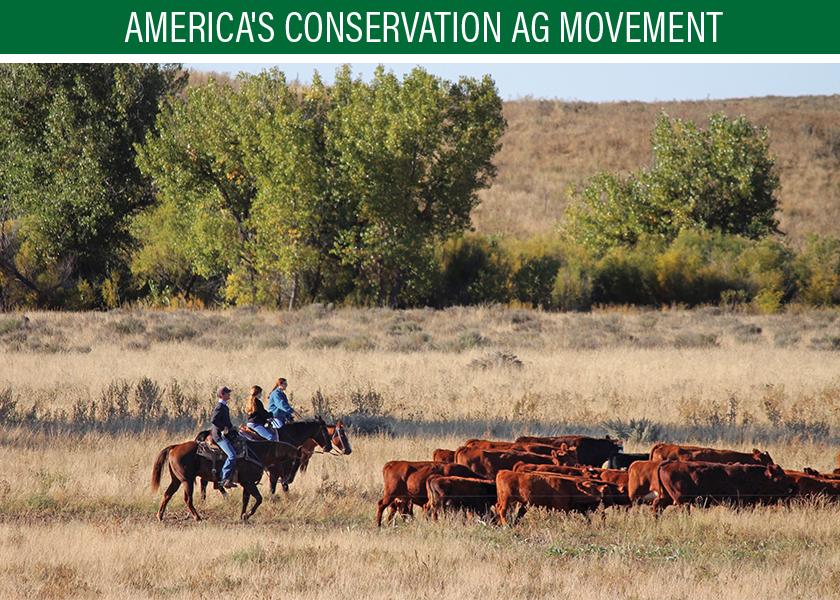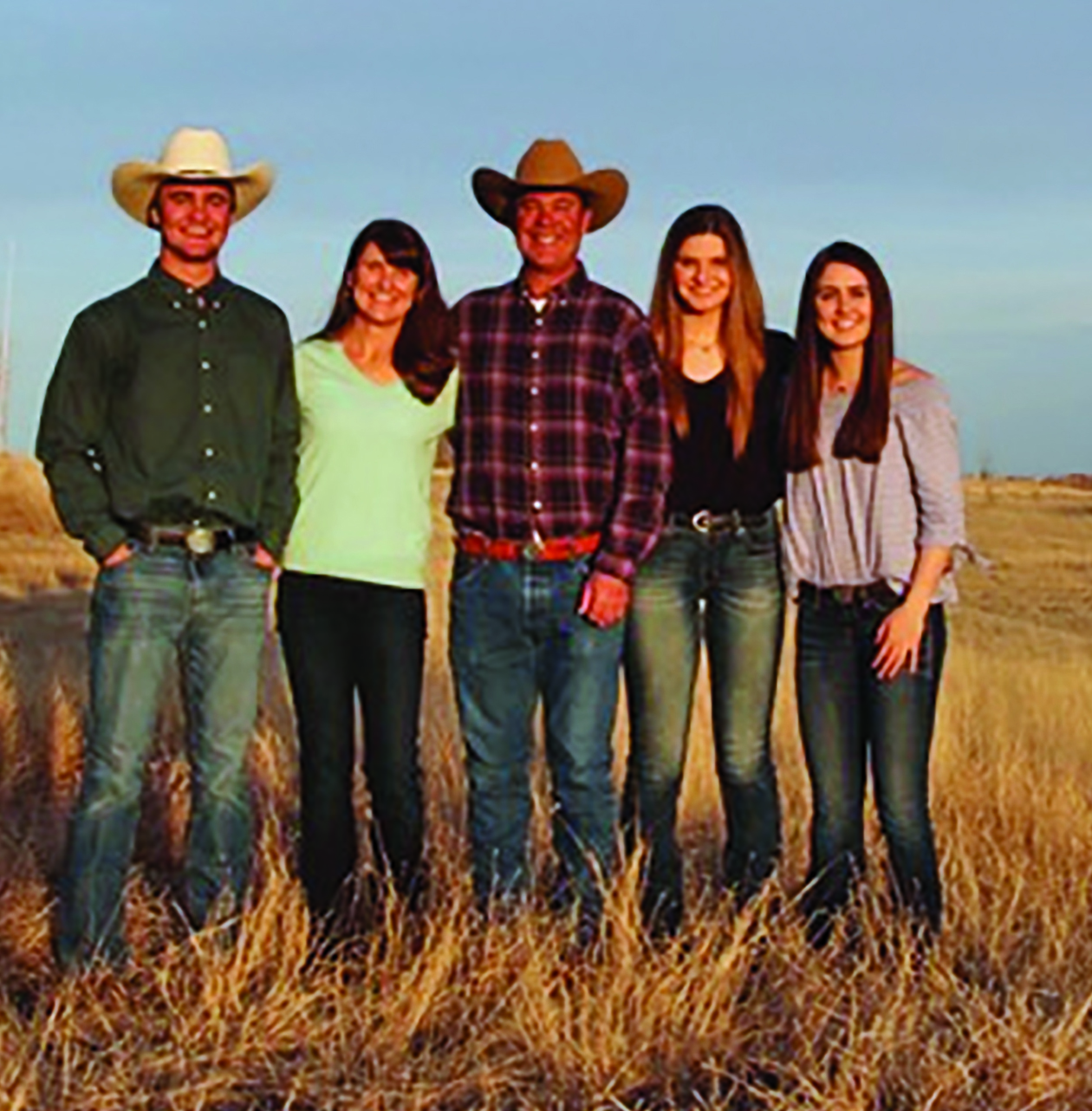A Brittle Environment

Resiliency has defined Collins Ranch for more than a century. Under the same family’s management, the ranch has weathered the Dust Bowl, crippling droughts, volatile commodity prices and sizable prairie fires.
Today, the ranch’s fragile grassland environment benefits from continued stewardship provided by Toby and Amy Johnson and their children: Brad, Haley and Tess.

The Johnson’s 1,000-cow ranch on Colorado’s Eastern Plains consists mostly of shortgrass and sandsage prairie. The family believes they are grass farmers first and cattle ranchers second. They take pride in how well their grass grows in a semi-arid region.
“Land is the foundation of the ranch,” Toby says. “You have to take care of the soil and the grass.”
The Collins Ranch was selected as the recipient of the 2020 Colorado Leopold Conservation Award®. The award, given in honor of renowned conservationist Aldo Leopold, recognizes ranchers, farmers and foresters who inspire others with their conservation efforts on private, working lands.
The Collins family knows overgrazing during a drought, or overstocking their herd when beef prices are high, could have devastating consequences for this brittle rangeland.
Transitioning to a rotational grazing system has improved their soil’s health. Now, each pasture is grazed for less than a week before the land gets a minimum of 100 days rest. Utilizing more, but smaller, pastures protects against overgrazing, allows for rapid range improvement and achieves optimal nutrition for cattle.
“All our pastures have more diversity and more production” since implementing rotational grazing, Toby says.
By moving cattle to fields of corn stalks and wheat during the winter, native grasses and riparian areas have been protected. Likewise, switching the herd’s calving season from late winter to May also proved beneficial to the health of cattle and grass.
The USDA Natural Resources Conservation Service assisted Collins Ranch with 35 miles of underground pipelines to widely distribute water for livestock and wildlife. More than 50 water sources have been replaced or installed, with bird ramps placed in all water tanks. All water sources are located uphill to prevent erosion in meadows and riparian areas along creeks.
Among their other innovative conservation practices, the Johnsons released tens of thousands of beetles as a cost-effective
and environmentally-friendly way to eradicate invasive and water-intensive tamarisk trees from riparian areas. They also work with Colorado Parks & Wildlife and a hunting outfitter to sustain the strong population of deer on their ranch, and they defer grazing and mark barbed wire fences to protect lesser prairie-chicken leks.
Tucked away on Colorado’s Eastern Plains, Kit Carson (population 234) is what some would call flyover country. That compels the Johnsons to focus not only on the health of their ranch, but on the health of the community.
Amy is the chairperson of Kit Carson Rural Development, a nonprofit that works to fill the gaps that exist in a community without a department of public health, public housing, hospital, day care and recreational center. Since 2006 the group has built the town’s only park and a business incubator, cleaned up a massive brownfield site and created affordable housing for teachers and local families, by leveraging more than $2.7 million in grants and contributions. Likewise, Toby serves on the local school board, which successfully sought a grant to build a new school.
The Johnsons are doing more than their part to keep this town thriving for future generations.
The Sand County Foundation and American Farmland Trust present the Leopold Conservation Award to landowners in 21 states with a variety of conservation, agricultural and forestry organizations. The award is presented in Colorado by the Colorado Cattlemen and the Colorado Cattlemen’s Agricultural Land Trust. leopoldconservationaward.org







